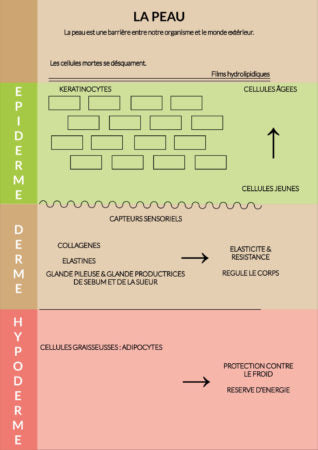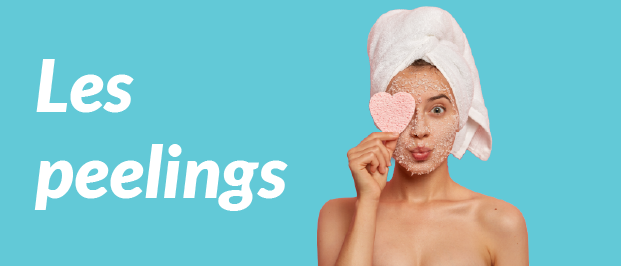Peelings, definition and concept
The skin is a barrier between our body and the outside world, which explains why it undergoes several micro-aggressions over the days.
It is divided into several layers, in short:
- The epidermis: where cells rise to the surface as they age: the cells are on the outside.
- The dermis: it contains proteins such as collagen and elastin: this is what provides elasticity and strength to the skin.
- The hypodermis: where adipocytes (fat cells) are found that protect against the cold.
It is therefore easy to understand that dead cells are found on the surface where they are clearly visible. It thus becomes important to remove them from time to time. This action represents exfoliation.

How does peeling work?
There are two types of exfoliation:
- Mechanics: dermabrasion, like scrubs.
- Chemical: chemical abrasion: peels.
Peeling is the English name and the most commonly used term for chemical abrasion.
According to Larousse, a peeling is defined as "the separation of dead parts that detach from the epidermis, a mucous membrane, etc.".
The principle is to exfoliate a certain thickness of skin at varying depths to eliminate imperfections and superficial scars.
Healthier cells will therefore rise to the surface of the skin.

The effects to be expected:
- Radiance/ skin tone homogenization
- A rejuvenated skin
- A smoothing of fine lines

The different types of peels
The peels are made from different acids:
- AHA -> Alpha hydroxy acid: these are fruit acids that remain relatively superficial and are very suitable for combination to dry skin, as well as for mature skin. They often have anti-aging properties.
- Lactic acid: like the Lactic Peel 1 & 2 from MCCM
- Glycolic acid: like the Glycolic Peeling Kit from Dives.
- BHA -> Beta hydroxy acid: these are acids particularly useful for acne-prone, oily skin with clogged and enlarged pores.
- Salicylic acid: like the Salicilic Peel from MCCM.
- PHA -> poly hydroxy acid: recommended for sensitive skin, it is gentler.
- Mandelic acid: with the mandelic acid kit from Dives.
- TCA -> trichloroacetic acid: it is a powerful acid that can cause peeling for several days; it is advisable to use it in a medical setting.
- Trichloroacetic Acid: Revitalizing Deep Peeling Kit from Dives
Indication
15 days to 3 weeks before the peeling, it is necessary to prepare the skin so that the product penetrates optimally.
- Stop your skincare routine, especially if it contains retinol.
- The skin should be as neutral as possible: it is recommended to start exfoliating it with the SimilDiet degreasing lotion.
For 1 month after the peeling, it is very important to apply sunscreen, not only because the skin is almost bare in the first few days after the peeling but also because the sun is a significant factor in photo-aging. This is why it should be avoided during the summer. It is also important to properly hydrate your skin and drink plenty of water.






























































































